Drawing from extensive research by eMarketer and new findings from impact.com and Acceleration Partners, a clear picture emerges of marketing’s next transformation. By 2026, influencer marketing will surge to $10 billion, while creator-driven affiliate revenues are projected to reach $1.3 billion by 2025—an 86 percent increase in just three years. This parallel growth signals a fundamental shift in how brands connect with consumers.
The data reveals why: nearly 90 percent of U.S. audiences actively engage with influencer-brand content, with Gen Z leading this transformation. Their engagement on YouTube (61 percent) and other social platforms (50 percent) now exceeds traditional TV viewership, a trend that will accelerate as social media audiences are projected to surpass TV viewers by 2025.
In response, innovative CMOs are breaking down the traditional barriers between influencer and affiliate marketing. This integrated approach helps deliver stronger results on tighter budgets while meeting consumers where they spend their time. This report examines why marketing leaders are merging these channels, the measurable impact on return on investment (ROI), and how brands can implement this strategy successfully.
Transform your marketing strategy by mastering these critical skills:
- Break down silos between your influencer and affiliate partners:
- Align your marketing teams with a unified strategy
- Optimize channel performance to maximize ROI
- Create a future-ready approach for long-term success
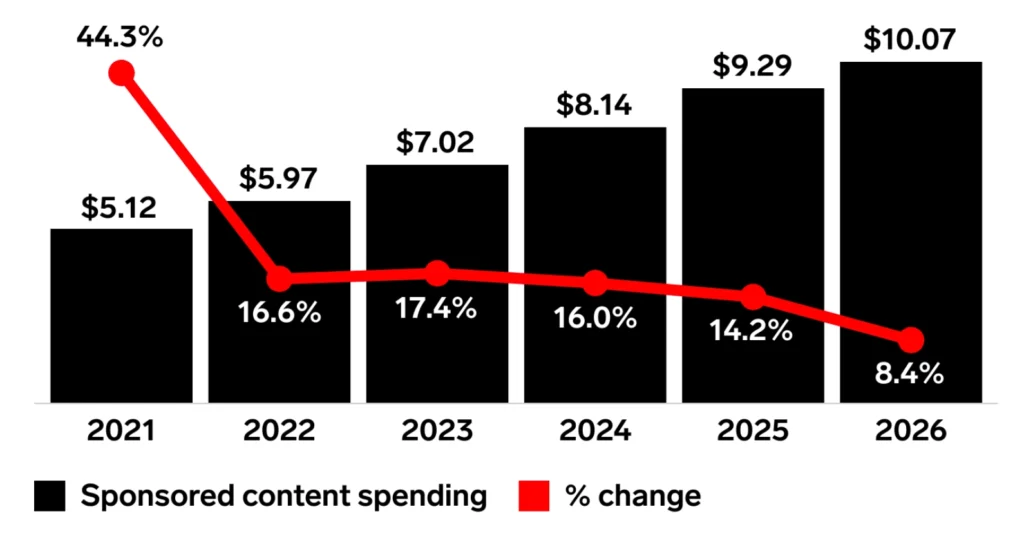
Key findings
-
Integrated marketing performance
- Brands combining influencer and affiliate programs generate 46% higher affiliate-based sales
- In health and beauty sectors, this increase reaches 178%
- UGC programs reduce customer acquisition costs by 20-30% compared to traditional brand content
-
Market growth trajectories
- Influencer marketing projected to reach $10 billion by 2026
- Creator-driven affiliate revenues are expected to hit $1.3 billion by 2025, an 86% increase from 2022
- Social media audiences will surpass TV viewership by 2025
-
Consumer behavior shifts
- 90% of U.S. audiences engage with influencer-brand collaborations
- 61% of Gen Z regularly engage on YouTube
- 50% of Gen Z viewers (on average) engage with Instagram, TikTok, and Snapchat
- 82% of Gen Z and 73% of Millennials make purchases based on creator recommendations
-
Content performance metrics
- Creator content outperforms studio-produced content in engagement by 58%
- Brand-influencer collaborations see 55% higher relevance ratings
- Average view rate for integrated campaigns reaches 60%
Social commerce trends: how influencer recommendations drive purchase decisions
Market forecasts show that 87 percent of U.S. social media users are open to brand-sponsored influencer content, indicating a preference for influencer-driven messaging over traditional advertising such as TV ads. This shift stems from influencer content’s unique advantages: authenticity and trust, engaging entertainment, and exclusive perks (think promo codes and affiliate deals).
Gen Z is leading this transformation in media consumption, favoring social media over television. YouTube reigns supreme, with nearly 62 million U.S. Gen Z viewers tuning in daily for long-form, niche content they can’t find elsewhere.
Meanwhile, social media platforms have become trusted go-to sources for in-depth product reviews, empowering consumers to make informed purchasing decisions. Social media has evolved into an educational and persuasive tool, influencing buyers to click “add to cart”.
Breaking down the full-funnel impact of influencer-affiliate marketing
Marketers once clearly defined their roles: influencers built awareness, while affiliates drove conversions. However, research now shows that these roles overlap and complement each other across the entire customer journey.
A study found that marketing leaders who combined their influencer and affiliate channels led to remarkable growth. This approach revealed a myth-busting insight: influencers proved highly effective at driving sales, while affiliates excelled at building brand awareness.
Modern marketing partnerships impact every stage of the customer journey. Key partnership types include:
- Pay-per-click, pay-per-sale, or pay-per-lead affiliates
- Influencers of many sizes (nano- to celebrity-sized influencers)
- Guest bloggers
- Video content creators
- Podcast collaborators
- Channel partners
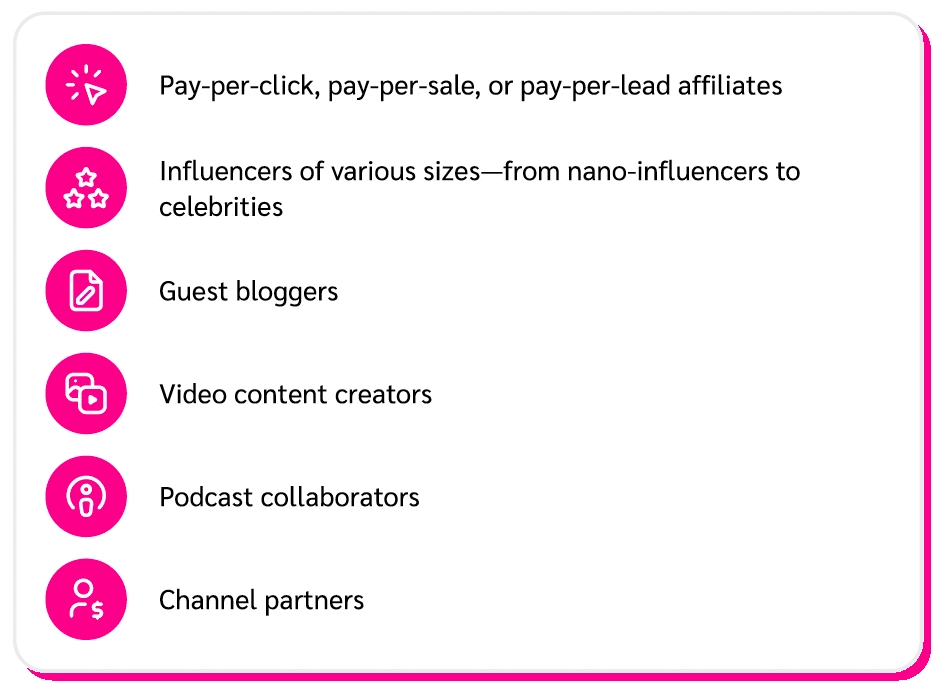
Here’s how affiliates and influencers operate within the customer journey and as brand partners.
- Affiliates: Some large content publishers introduce new brands and products to consumers, usually with low conversion rates. However, these affiliates often appear at the beginning of the customer journey, and ask for upfront payments from brands, much like influencers.
- Influencers: There’s a wide range of influencers, from micro- to celebrity size, who emphasize strong calls to action (CTAs) in their content. They focus on conversions and are open to revenue shares or cost-per-action (CPA) compensation models, similar to affiliates.
Social commerce platforms: where consumers spend time and money
YouTube might dominate Gen Z’s attention in the U.S., but platforms like Instagram, TikTok, and Snapchat aren’t far behind. Together, these three social media giants boast nearly 150 million Gen Z users, each capturing nearly 50 million viewers.
More than 86 percent of Gen Z audiences actively follow influencers, carefully curating the creators and content they engage with. From pet lovers and DIY enthusiasts to foodies and niche hobbyists, there’s a thriving community for just about everyone.
Social media has shattered the old-school TV model, where viewers had to accept whatever the networks decided to air. Today, the power lies firmly in the hands of the audience.
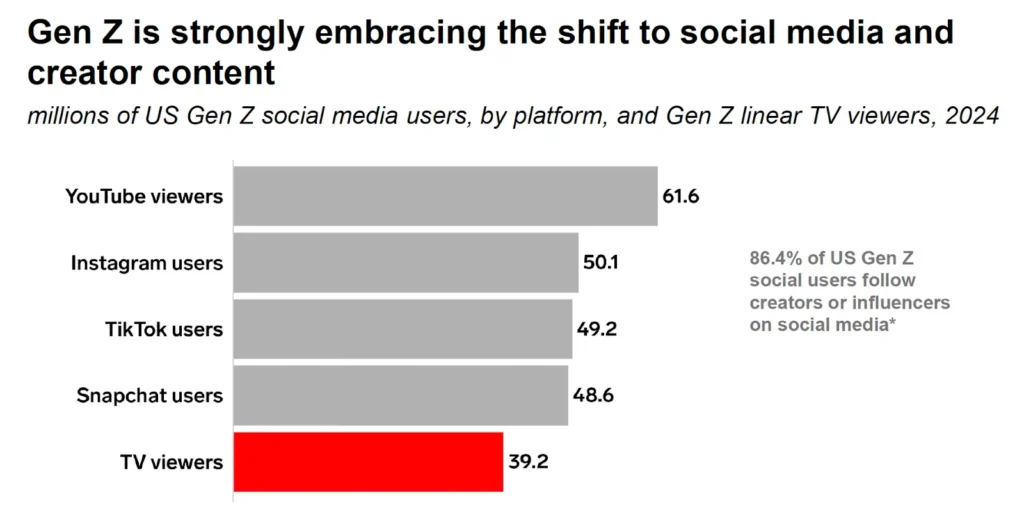
This trend brings unprecedented exposure for content creators, providing brands with a powerful opportunity to connect with audiences.
So, what does this mean for marketers?
To stay relevant, brands must partner with trusted creators who can authentically showcase their products to consumers. The timing couldn’t be better—82 percent of Gen Z and 73 percent of Millennials act on recommendations from influencers, celebrities, or creators when making purchases.
Audiences trust influencers for buying decisions, because social media seamlessly integrates into daily life. It lets users find new products, read reviews, and access discounts or affiliate links from their phones. The key is minimizing friction, and social media does this well.
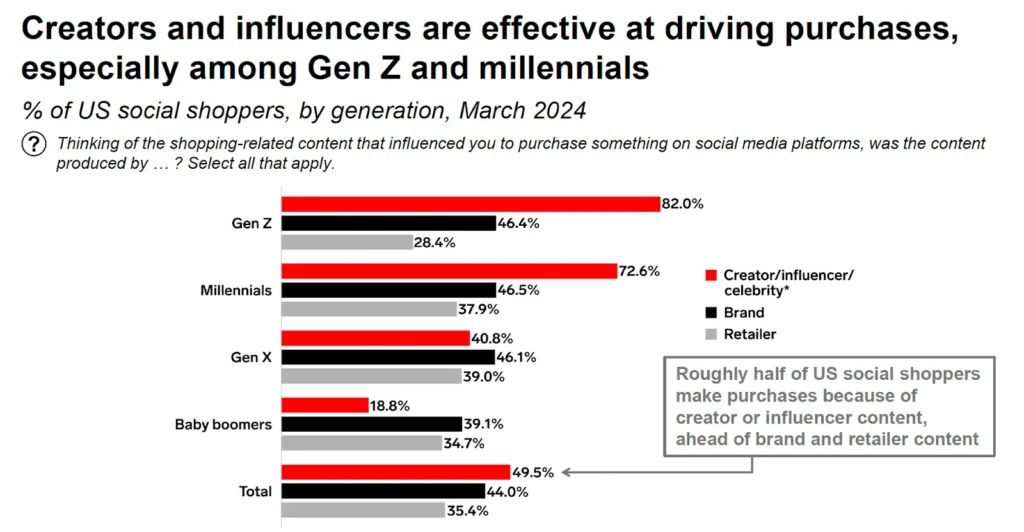
Digital marketing trends indicate that almost half of U.S. social shoppers purchase because of influencer content. For marketers who aren’t tapping into this channel, that is an unfathomable amount of potential lost revenue.
Drive sales through integrated influencer-affiliate marketing
When influencers and affiliates operate in isolation, it becomes difficult to fully understand the customer journey or measure the true value these partners bring. Marketing leader interviews highlight two key challenges:
- Inefficiency and redundancy: Influencer and affiliate marketing teams often overlap, targeting the same stages of the customer journey. This duplication leads to wasted time and increased costs.
- Fragmented focus and budget waste: By working in silos, both teams focus on limited parts of the funnel, diminishing effectiveness and misusing resources.
A more collaborative approach can access the full potential of these partnerships and deliver better results.
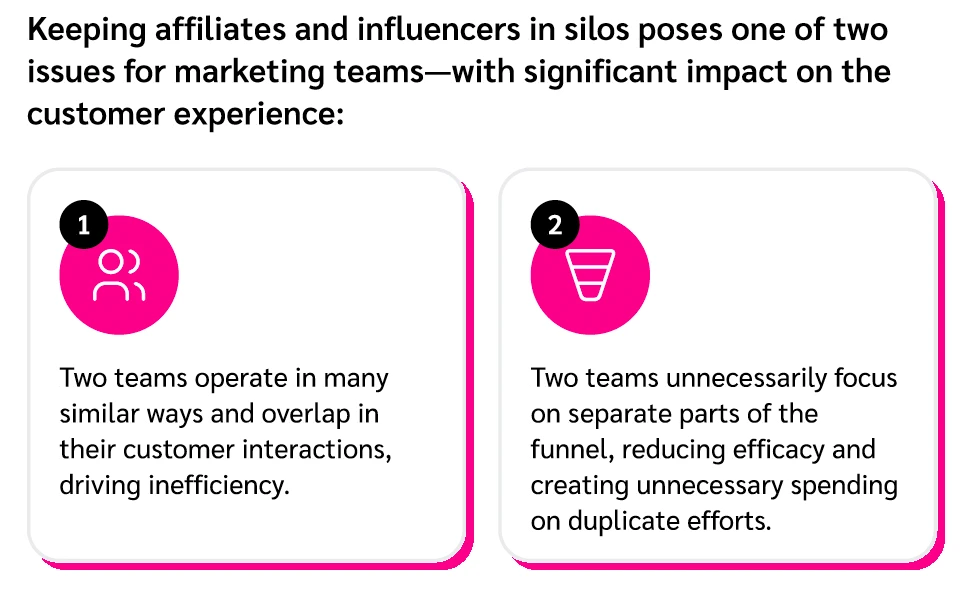
Research participants shared that combining influencers and affiliates can help brands target the full customer journey. This approach optimizes budgets—especially as CMOs are pressured to do more with less—and provides the maximum ROI.
The evidence speaks for itself: impact.com’s preliminary internal data found that brands combining influencers and affiliates generated 46 percent higher affiliate-based sales out of their total e-commerce sales than brands that only worked with affiliate partners.

After all, most customers don’t purchase a product after seeing it once. Their journey can involve watching a product in-use TikTok video or a long-form YouTube video and then seeking a discount code before purchasing.
Influencers and affiliates act as the roadmap, guiding customers through educational content and promo codes, instilling purchase confidence, and minimizing risks.
Imagine you’re in the market for a new MacBook. As you start researching, you’re quickly overwhelmed by the sheer number of models, chipsets, and price points—ranging from a few hundred to several thousand dollars. Even for a tech-savvy buyer, sorting through all these options without hands-on testing can feel impossible. That’s where influencers come in. This MacBook buyers guide for 2024 by YouTuber The Tech Chap breaks it all down, delivering everything you need to know in under 15 minutes.

Marketing integration strategy: 3 steps to unify influencer and affiliate teams
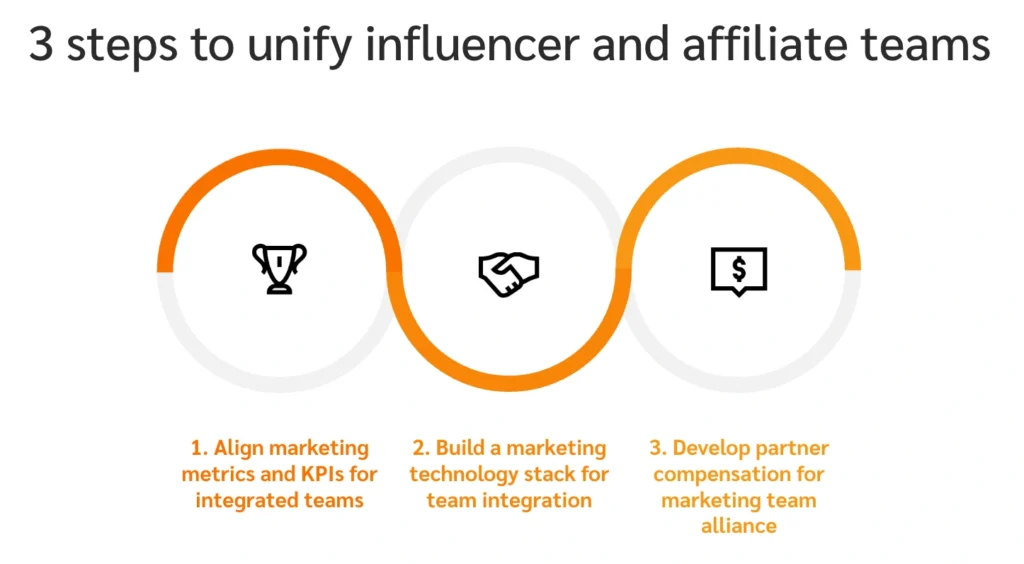
Building an integrated marketing team requires careful planning. While influencers and affiliates may share goals, they need different management approaches to succeed.
Survey respondents found that strong working relationships between teams can help marketers overcome initial resistance. Research reveals key differences in partnership management styles:
Traditional affiliates: These partners require minimal ongoing management, typically executing campaigns independently once onboarded with basic guidelines.
Influencers: These partnerships thrive on personalized management approaches, including one-on-one meetings and collaborative creative development to maintain authentic brand alignment.
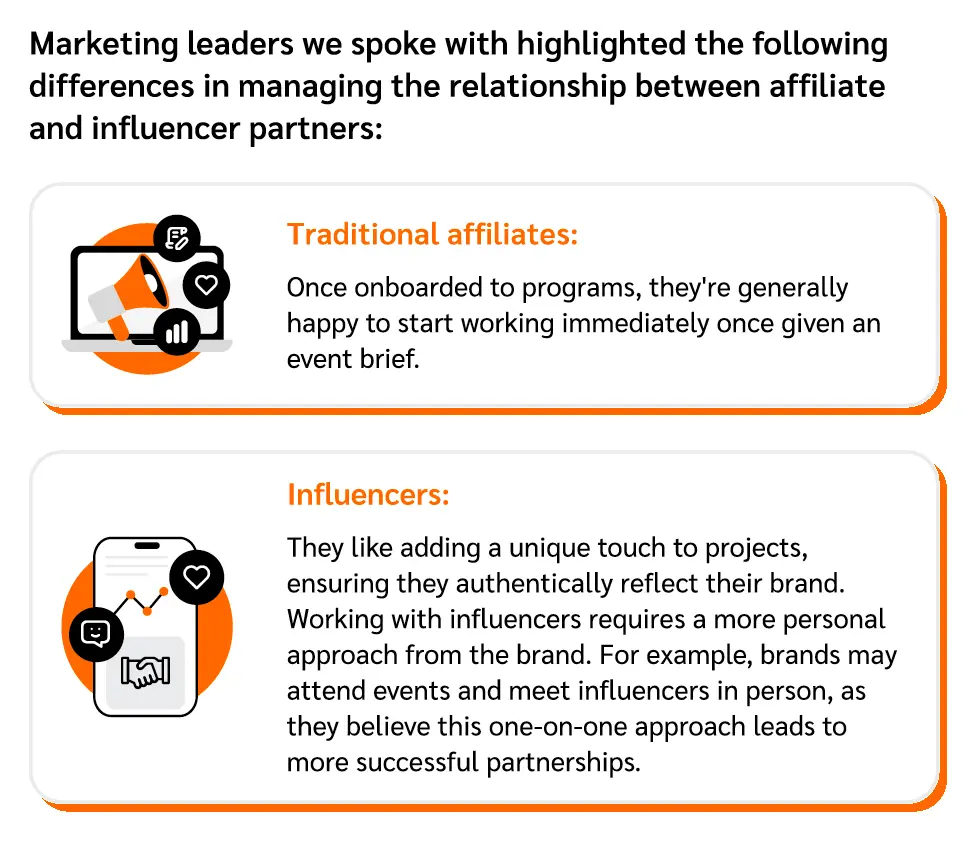
There are three ways to integrate your marketing teams for success, based on impact.com’s research:
- Align marketing metrics and KPIs for integrated teams
- Build a marketing technology stack for team integration
- Develop partner compensation for marketing team alliance
1. Align marketing metrics and KPIs for integrated teams
While integrating marketing teams reduces redundancies and streamlines operations, success hinges on unified performance measurement. Marketing studies reveal a common challenge: teams often track conflicting metrics that tell incomplete stories.
For example, influencer managers might celebrate high engagement rates without measuring conversion impact, while affiliate teams focus solely on sales without considering brand awareness. This disconnected approach masks true program value.
Leading brands solve this by adopting return on ad spend (ROAS) as their unified success metric, analyzing:
- Demand creation to conversion ratios
- Media mix performance
- Cross-channel attribution
- CAC
Most importantly, successful teams take a multi-touch perspective, measuring how influencers and affiliates impact each stage of the customer journey. This comprehensive view combines engagement metrics with revenue data, helping teams prove total program value and secure additional investment.
2. Build a marketing technology stack for team integration
Research reveals that disparate marketing systems create significant challenges for integrated teams. Marketing leaders identified three critical technology gaps:
- Reporting misalignment: Inconsistencies between internal and network data complicate performance measurement and partner compensation.
- Tracking inconsistencies: Without unified tracking systems, teams struggle to accurately measure influencer impact and attribute value across channels.
- Platform fragmentation: Separate systems for brand awareness and performance marketing create disconnected views of campaign effectiveness.
To address these challenges, leading brands are implementing unified partnership platforms that integrate partner management, tracking, and analytics in one system. This consolidated approach enables teams to measure true program ROI, optimize partner compensation, and scale programs efficiently while reducing operational complexity.
Data shows that unified technology solutions provide critical visibility into cross-channel performance, helping teams make more strategic decisions based on accurate, comprehensive data.
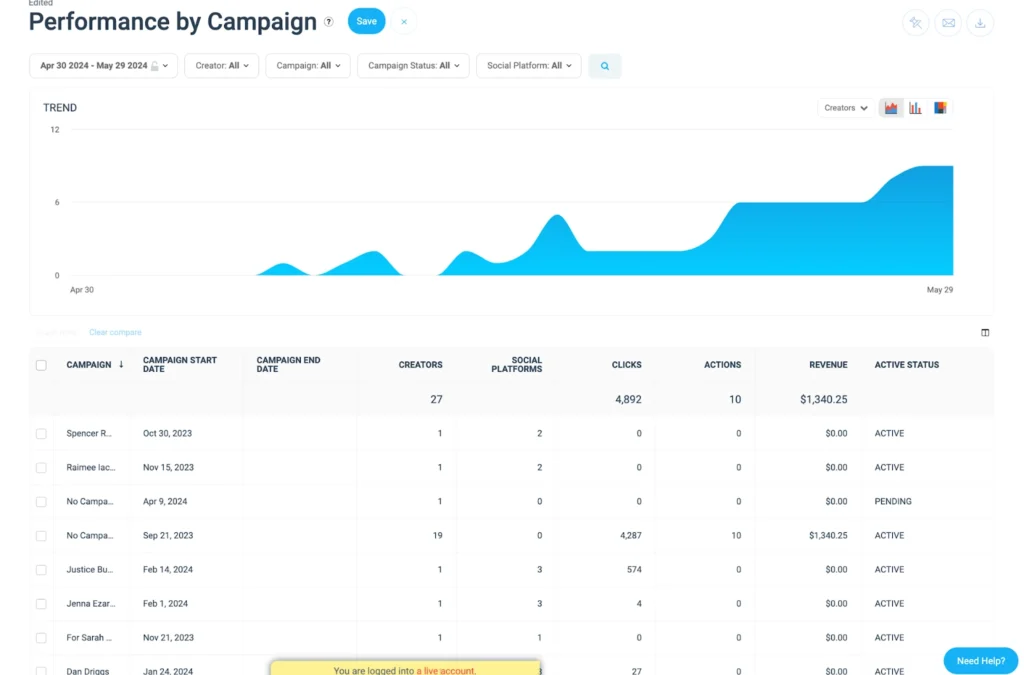
impact.com provides a comprehensive view of performance across partners, social platforms, and posts, ensuring your marketing teams stay aligned and operate at peak efficiency.
3. Develop partner compensation for marketing team alliance
Establishing partner compensation upfront is key to avoiding conflicts within marketing teams later—a challenge many marketers face.
While affiliates are often compensated based on performance metrics like revenue sharing, brands can also explore other models, such as gifting, flat fees, or a combination of flat fees and commissions, offering greater flexibility and alignment with their goals. Read more on compensation here.
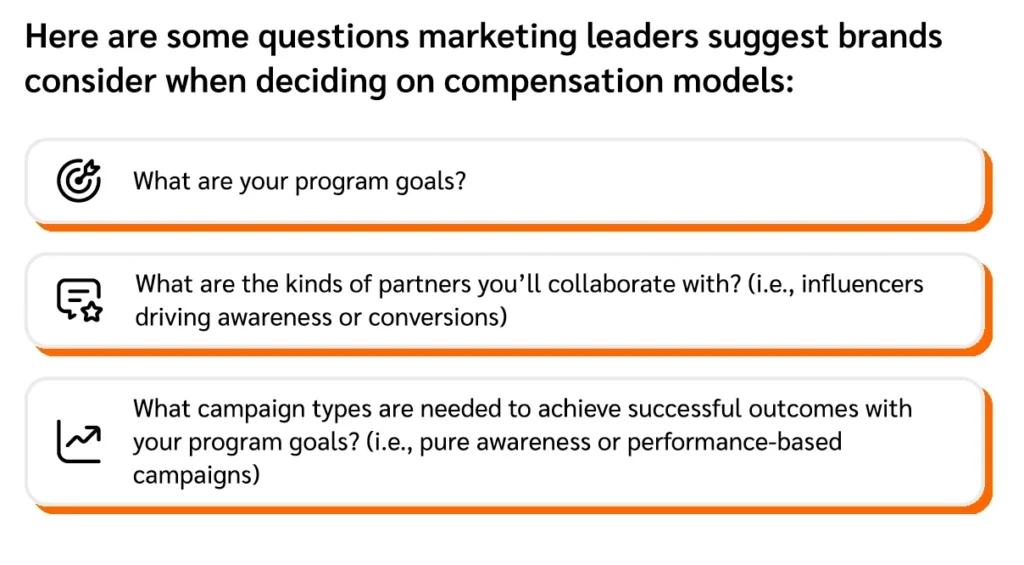
Research participants shared three strategies to optimize compensation in cross-functional teams:
- 1. Campaign basis: Determining compensation specific to campaigns ranging from influencer, to affiliate, and cross-collaboration efforts.
- 2. Goal-based payments: Marketers divide campaigns based on goals, and the budgets can come from either the brand or influencer budgets, depending on the campaign goals.
- 3. Aligning budgets to goals: A combined budget is allocated to specific influencer types based on their campaign goals (i.e., awareness or conversion).
Planning budgets and strategies in advance helps avoid overlaps and ensures teams maximize resources. A single platform for partner payments can improve budget management. With impact.com, track all payments in one dashboard, see where your budget is going, and measure performance against your marketing goals. Enjoy fast, flexible payouts with multiple payment models to keep partners motivated.
UGC marketing strategies that drive business results
One of the primary differences between affiliates and influencers is that successful influencers create user-generated content (UGC) to be shared by social media users, rather than brands and marketers—although brands often repost UGC to their channels.
UGC is shared by brands and consumers, bringing increased brand awareness and driving returns. Plus, consumers don’t see it as intrusive.

eMarketer highlights four benefits of UGC compared to brand or studio-produced content:
- 1. UGC ads feel like they fit in with the content produced.
- 2. UGC is more relevant to the audience.
- 3. The content provides a better viewing experience (its shot and viewed on smartphones).
- 4. It offers a positive brand perception at least half of the time.
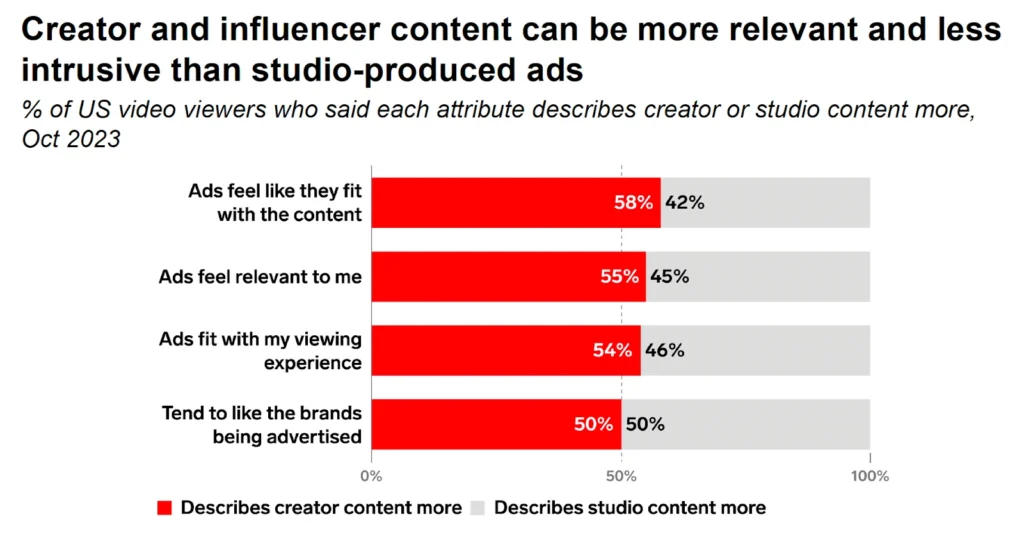
In a nutshell, UGC consistently outperforms brand-created material. According to industry projections, brands face the challenge of managing multiple platforms and channels as the creator economy continues to grow. UGC offers a powerful solution, allowing content to be repurposed seamlessly across platforms. For instance, a video created on TikTok can effortlessly be shared on Instagram, Facebook, and YouTube, maximizing its reach and impact.
Implementing always-on UGC marketing programs
Acceleration Partner’s internal data shows that UGC brings 20 to 30 percent lower customer acquisition costs (CAC) for brands compared those who use solely brand-generated assets.
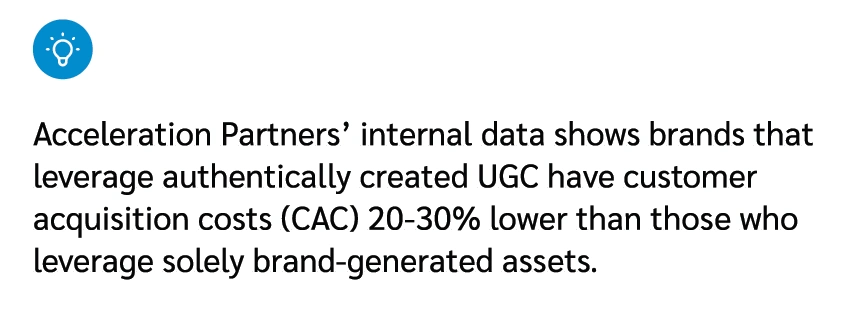
UGC can include photos, videos, reviews, or social media posts created by consumers and influencers, not brands. Research shows that more brands are implementing “always-on” UGC programs. This is a continuous strategy in which marketers actively encourage and collect UGC from their audience year-round.
Instead of running one-off campaigns, this approach keeps a steady flow of authentic, relatable content, helping brands consistently build trust and engage with their community.
This approach is not only more cost-effective than producing traditional branded content, but also allows brands to target niche audiences and deliver the authenticity consumers value.
As affiliates and influencers deepen their connection with a brand, they can be cross-trained to align UGC efforts with both brand awareness and performance-driven goals, creating a powerful synergy.
B&Q, the UK’s leading home improvement and garden living retailer, is doing it right. The brand is constantly recruiting new partners and nurturing long-term partners like influencer Jade Sweeney to create DIY content showcasing its products.
Recently, the brand revamped its influencer program using impact.com/creator and gained a 60 percent average view rate. Learn more about the retailer’s success story here.

4 strategic marketing integration trends for 2025
Building a strong full-funnel marketing strategy is essential, but staying ahead of the curve is just as important. To future-proof your approach, consider these four key insights:
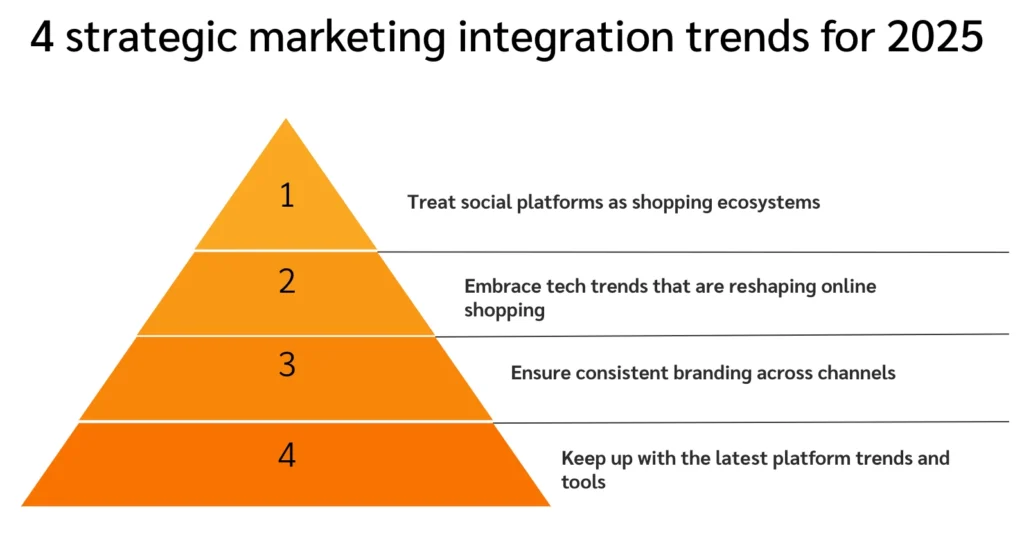
- Treat social platforms as shopping ecosystems. Platforms like Instagram and TikTok have expanded beyond browsing to full shopping experiences. With features like live-stream shopping, shoppable posts, and in-app storefronts, brands should aim to meet customers where they already spend their time.
- Embrace tech trends that are reshaping online shopping. Advanced tools like AI-powered recommendations and augmented reality (AR) try-ons are making shopping more personal and interactive. Letting customers “try on” clothes or visualize furniture in their space not only enhances the experience, but also boosts confidence to buy.
- Ensure consistent branding across channels. Shoppers move effortlessly between platforms, so your brand needs to feel connected across all touch points. Whether your customer starts on Instagram, TikTok, or your website, ensure a consistent message and design, post platform-optimized content, and build an easy checkout process.
- Keep up with the latest platform trends and tools. Social commerce is rapidly advancing, making it essential to stay updated on the latest tools and features. Continuously experimenting and refining your strategy will help your brand remain competitive, as platforms and trends inevitably change.
FAQs
Influencers excel at crafting compelling content that drives consumer purchases, while affiliates shine at boosting brand awareness. When combined, they form a powerful, full-funnel marketing strategy.
Combining influencers and affiliates allows you to engage consumers at every stage of their buying journey, from building brand awareness to providing product reviews and exclusive promo codes. More marketers are taking this approach to maximize their ROI.
To achieve seamless collaboration, focus on three essential steps: clearly defining success metrics across teams, leveraging a unified partnership platform to streamline efforts, and aligning on partner compensation strategies. These approaches eliminate friction and potential obstacles, empowering your teams to operate with maximum efficiency.
There are four insights you can use to future-proof your marketing strategy. Treat social platforms like Instagram and TikTok as shopping ecosystems and embrace features such as live-stream shopping and shoppable posts. This meets customers where they spend their time. Embrace tech trends like AI recommendations and AR try-ons to create a more interactive and personalized shopping experience. Ensure consistent branding across all platforms to provide a seamless journey, and stay updated on platform trends to keep your social commerce strategy competitive.
Transforming marketing through channel integration
The next evolution in marketing centers on unified teams and integrated channels, with impact.com’s research showing brands that combine influencer and affiliate programs achieve 46 percent higher affiliate-based sales compared to those using affiliate partnerships alone. For sectors like health and beauty, this increase reaches 178 percent.
The data is clear: brands that break down silos between influencer and affiliate marketing see dramatically higher ROI, lower customer acquisition costs, and stronger brand awareness. Those who maintain separate approaches risk falling behind as consumers increasingly expect seamless, authentic shopping experiences.
With impact.com, you can seamlessly manage influencer and affiliate partnerships throughout their life cycle. Analyze performance, optimize budgets, and adjust strategies to maximize results—all within one platform.
Ready to build your best program yet? Request a demo with impact.com today.






